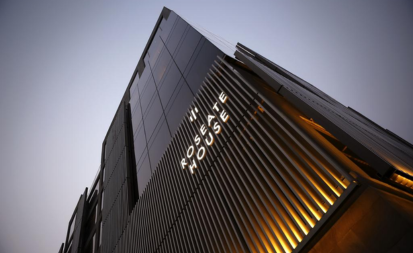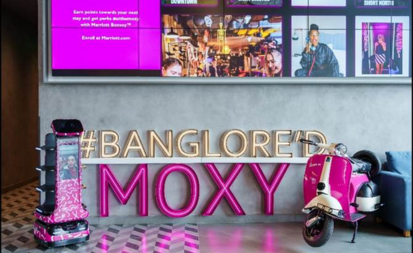Wine can Yield Profit Margin of Around 70% in Restaurant, Making Oenology an Important Area of Expertise for Future Food and Beverage Managers
Gaurav Bisht, Assistant Food & Beverage Manager, Hyatt Regency Pune & Residences Major factors behind the growth of Wine tourism in India. Over the last five years, wine tourism has seen a boom in India, with almost all the

Gaurav Bisht, Assistant Food & Beverage Manager, Hyatt Regency Pune & Residences
Major factors behind the growth of Wine tourism in India.
Over the last five years, wine tourism has seen a boom in India, with almost all the big players opening their doors to patrons from around the country. Here are some factors mentioned, behind the growth of wine tourism in India:
- Emerging Wine Industry: Growth in Indian wine industry has attracted wine enthusiasts and tourists interested in exploring the local wine culture.
- Changing Consumer Preferences: As Indian consumers’ palates evolve, there is a growing interest in wine consumption.
- Science Location: Many of India’s wine producing regions are located in picturesque setting, such as Nashik in Maharashtra, Nandi hills in Karnataka, and the Western Ghats. These locations offer beautiful landscapes and tranquil environments, making them attractive destinations for tourists.
- Festivals and Events: Wine festivals and events provide opportunities for tourists to sample a variety of wines, learn from experts, and enjoy entertainment in a festive atmosphere.
- Government support: Some state govts in India have recognized the potential of wine tourism and have taken steps to promote it. They may provide incentives to wineries, develop infrastructure, and organize wine-related events to attract tourists.
- Rise of Boutique Wineries: Boutique wineries have gained popularity. These smaller establishments offer intimate and personalized experiences, allowing visitors to connect with winemakers and gain insights into wine making process.
- Educational Initiatives: Wine education programs and courses have become more widely available in India, sparking interest among wine enthusiasts to learn about the complexities of wine production, tasting, and appreciation.
- Internal Recognition: Indian wines have started to gain recognition on the international stage, winning awards and accolades. This recognition can boost the image of Indian wines and attract wine tourists.
How has the placement/ demand of wine in Hotels, changed over time?
Wine can yield profit margin of around 70% in restaurant, making oenology an important area of expertise for future food and beverage managers.
Hotels have expanded their wine list to a wider range of tastes. In the past, wine lists may have been limited to a few well known labels. Today, hotels often offer a diverse selection of wines, including international and local options, catering to both connoisseurs and casual wine drinkers.
Many hotels now offer a selection of wines by glass, allowing guests to try different wines without committing to a full bottle. This has become more common as hotels seek to enhance the dining experience and accommodate solo travelers and those who prefer variety.
Upscale hotels often provide wine paring menus in their restaurants. These menus suggest wines that compliment specific dishes, enhancing the overall dining experience. Wine pairings have become an integral part of fine dining in hotels.
Hotels increasingly feature wines from around the world, reflecting the globalization of the wine industry. This allows guests to explore wines from different regions and countries, contributing to a more diverse wine landscape.
Overall, the placement and demand for wine in hotels have evolved to meet the changing tastes and preferences of guests. Hotels have recognized the importance of offering diverse wine options and providing wine-related experiences to enhance their guests stays.
Wine has become an essential part of the menu in today’s dining experience. What are the key factors in managing and serving the diners’ wine options?
Here are key factors to consider when managing and serving wine options diners:
- Wine Selection and Inventory: maintain a well curated wine list that offers a variety of options to cater to different tastes and budgets.
- Staff Training: Staff should be knowledgeable about the wine list and be able to assist dines in making informed choices.
- Wine Presentation: Present the wine list to diners promptly after they are seated. Ensure that wine glasses are clean and polished before serving wine.
- Temperature: Store and serve wine at the correct temperatures. Red wines are typically served slightly below room temperature, while white wines are served chilled.
- Opening and Pouring: Open wine bottles at the table, if possible, using a corkscrew or wine key. Show the cork to the guest, and pour a small sample (usually about one ounce) for them to taste and approve before serving the rest of the table.
- Responsible Service: Promote responsible alcohol consumption and be prepared to deal with guests who may have had too much to drink. Know the legal drinking age and adhere to responsible alcohol service laws and guidelines in your region.
According to you, how has the wine industry evolved over time in terms of supply as well as customer demand? How has it been impactful for your brand?
The wine scene has been quite a transformation over the years, both on the supply and demands fronts.
Supply wise, there’s been a significant increase in the number of wineries and the variety of wines they produce. You’ve got winemakers experimenting with different grapes, aging techniques, and even sustainable practices. So, there’s just a lot more to choose from these days.
On the day customer demand side, people are way more into wine now. It’s not just a fancy drink for special occasions anymore. Folks are curious and want to explore different wines, try new flavors, and learn about pairing with food. It’s become a part of the dining experience.
Now, for our brand, it’s been pretty impactful. We’ve had to keep up with the trends, expand our wine offerings, and make sure our staff knows stuff. We want our customers to have a great wine experience when they dine with us, whether they’re wine aficionados or just trying it out. So, yeah, the evolving wine industry has pushed us to step up our game and offer more choices and knowledge to our customers.
How is wine at your brand (Hotel, restaurant or airline) playing an essential role in customer experience?
At Hyatt Regency Pune, wine isn’t just a drink its part of the whole customer experience. We’ve got this fantastic wine game going on that makes your stay or meal extra special.
We offer variety of premium wines at Zeta restaurant.
We’ve got a curated wine list that’s like a treasure chest of different wines from all over the place. So, whether you’re a wine pro or just getting started, you’re bound to find something you love.
Then, we do this cool thing where they suggest wines that go perfectly with food you’re ordering. It’s like a flavor explosion in your mouth, and it takes your dining experience up a notch.
We also host wine events, like tastings and wine dinners, which are not only fun but also great way to learn more about wine and meet fellow wine enthusiasts.
And if you want to keep it casual, we’ve got wines by glass, so you can sip and savor without committing to a whole bottle.
All in all, wine at Hyatt Regency Pune, is like the secret ingredient that makes your stay or meal unforgettable. It’s about that extra touch of luxury and enjoyment to your time here. Cheers to that.
—-
 English
English French
French German
German Italian
Italian




